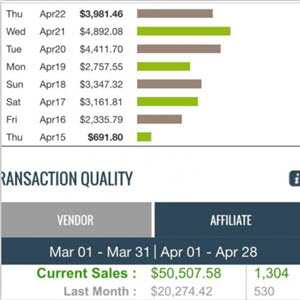The History Of Searchengine Optimization Xiv
1 GETTING STARTED WITH SEARCH-ENGINE OPTIMIZATION 2
Choose a Topic 2
Find Your Target Audience 4
Set a Budget 6
Set Goals 7
Put a Team Together 8
Keep Up with Industry News 10
2 KEYWORD GENERATION 12
An Introduction to Keyword Generation 12
Select Keywords 14
Analyze Your Competition with Compete.com 16
Keyword Research with KeyCompete 18
Analyze Your Competition with Seodigger 20
Using the Wordtracker Keyword Suggestion Tool 22
Using the Google Keyword Suggestion Tool 24
Research Keywords with Keyword Discovery 26
Analyze Keywords with Keyword Discovery 28
Filter Keywords with Keyword Discovery 30
3 CREATING PAGES 32
An Introduction to Creating Pages 32
Choose File Names 34
Optimize Title Tags 36
Optimize Meta Description Tags 38
Optimize Meta Keyword Tags 40
Create a Meta Robots Tag 42
Add Emphasis with Header Tags 44
Using Text Modifiers 46
Optimize Images 48
Create Links 50
Validate HTML 52
4 BASIC WEB SITE STRUCTURE 54
An Introduction to Basic Web Site Structure 54
Find Web Hosting 56
Establish a Domain Name 58
Optimize for Multiple Browsers 60
Plan and Design a Web Site Structure 62
Link within Subject Matter Themes 63
Design a Sitemap 64
Create a Company Information Page 66
Create a Privacy Policy 68
5 ADVANCED WEB SITE STRUCTURING 70
An Introduction to Advanced Web Site Structuring 70
Create a Robots.txt File 72
Using the Nofollow Attribute 74
Structure URLs Correctly 76
Protect Yourself with an .htaccess File 78
Using Mod_Rewrite to Rewrite URLs 80
Redirect Non-WWW Traffic to WWW 82
Redirect with 301 Redirects 84
6 CREATING CONTENT 86
An Introduction to Content Creation 86
Write for People, Not Search Engines 88
Avoid Duplicate Content 90
Using Proper Keyword Density 92
Using Latent Semantic Content 94
Keep Content Current 96
Optimize Non-HTML Documents 98
TABLE OF CONTENTS
7 CREATING COMMUNITIES 100
An Introduction to Creating Communities 100
Create a Blog with WordPress 102
Create a Blog with Blogger 104
Write Search-Engine-Optimized Posts 106
Make Your Blog Successful 108
Create a Community with vBulletin 110
Create a Community with phpBB 112
Make Your Forum Successful 114
Add Reviews to Your Web Site 116
8 BUILDING LINKS 118
An Introduction to Building Links 118
Evaluate Competition 120
Evaluate Potential Linking Partners 122
Acquire Quality Links 124
Using Effective Anchor Text 126
Link Directory Submissions 128
Article Directory Submissions 130
Community Participation 132
Request One-Way Links 136
Buy Links 138
9 USING GOOGLE ANALYTICS 142
An Introduction to Google Analytics 142
Create an Account 144
Install Tracking Code 146
Set Conversion Goals 148
Exclude Your IP Address with Filters 150
Exclude Traffic from a Particular Domain 152
Include Only Certain Directories 154
Track External Links 156
Automate Reporting 158
Using Analytics to Find New Keywords 160
Set Up E-Commerce Tracking 162
Insert Tracking Code on Your Thank You Page 164
Using Third-Party Shopping Carts 166
10 SOCIAL MEDIA OPTIMIZATION 168
An Introduction to Social Media Optimization 168
Network with Facebook 170
Network with MySpace 172
Maximize Exposure with StumbleUpon 174
Increase Traffic with MyBlogLog 176
Micro-Blog with Twitter 178
Connect with LinkedIn 180
Share Videos with YouTube 182
Take Advantage of Digg Traffic 184
Network with Sphinn 186
11 CREATING PAY-PER-CLICK CAMPAIGNS 188
An Introduction to Pay-per-Click Campaigns 188
Learn About AdWords Accounts 190
Create an AdWords Campaign 192
Target Your Campaign 196
Write Effective Ad Copy 198
Using Keyword Matching Options 200
Set Bidding Strategies 202
Run PPC Reports 204
Track Conversions 206
Using Google AdWords Editor 208
Optimize Your Account 210
|
for more ebooks http://latestebook.com | |||
|
jx "r^b - | |||
|
N— |
v - | ||
|
TABLE OF CONTENTS |
12 OPTIMIZING PPC CAMPAIGNS THROUGH QUALITY SCORE OPTIMIZATION 212
An Introduction to Quality Score Optimization 212
Learn About Quality Score 214
Optimize Quality Score 216
Test Ad Copy 218
Test Keywords Based on Match Type 220
Test Ad Copy with Advanced Keyword Insertion 222
Using Content-Targeted Campaigns 224
Using Placement-Targeted Campaigns 226
Using Pay-per-Action Campaigns 228
Test Performance with Dayparting 230
Optimize Your Landing Pages 232
13 OPTIMIZING FOR OTHER SEARCH ENGINES 234
An Introduction to Optimizing for Other Search Engines 234
Optimize Blog Posts for Technorati 236
Optimize Your Web Site for Del.icio.us 238
Optimize Your Images for Google Images 240
Increase Exposure on Ask.com 242
Using Shopping Engines to Drive Traffic 244
Produce Sales with eBay Auctions 246
Using Craigslist to Drive Traffic 248
14 MONETIZING TRAFFIC 250
An Introduction to Monetizing Traffic 250
Place Google AdSense Ads on Your Web Site 252
Place Yahoo Publisher Network Ads on Your Web Site 254
Earn Money with Commission Junction 256
Earn Money with LinkShare 258
Earn Money with AuctionAds 260
Advertise Cost-per-Action Offers with AzoogleAds 262
Advertise Cost-per-Action Offers with Hydra Network 264
Sell Reviews with ReviewMe 266
Sell Links with Text-Link-Ads.com 268
Sell Links with TextLinkBrokers.com 270
15 INSTALLING SEO PLUG-INS 272
An Introduction to SEO Plug-Ins 272
Install the Google Toolbar 274
Install the Alexa Toolbar 276
Using the SEO for Firefox Plug-In 278
Optimize Titles with the WordPress Title Tag Plug-In 280
Optimize Descriptions with the WordPress Description Tag Plug-In 282
Create Sitemaps with the WordPress Sitemap Generator 284
Using the Permalink Redirect Plug-In 286
INDEX 288
THE HISTORY OF SEARCH-ENGINE OPTIMIZATION
Search-engine optimization, or SEO, is the process of setting up your Web site so that it ranks well for particular keywords within the organic search results of major search engines, including Google, Yahoo, and MSN. Unlike paid search marketing, which requires you to pay for every click sent to your Web site from a search engine, traffic sent to your site from a search engine's organic results is free.
In the early days of SEO, the process of gaining top ranking for keywords was much easier than it is today. In those "good old days," search-engine algorithms were easy to crack. All you had to do was include the keyword you wanted to rank for in the title tag of your Web page and sprinkle that keyword throughout the content of your page, and chances were you would rank within the top ten results of your favorite search engine. Not surprisingly, over the years search-engine algorithms have become increasingly complex, which has resulted in Web site owners either outsourcing SEO to professional firms or self-educating through books like this one.
Dating back to 1996 or so search engines started to become a very popular tool for Web surfers looking for all sorts of information. Long before Google and Yahoo became popular, search engines such as AltaVista and InfoSeek were pioneers at providing search results to users within a fraction of a second. Search results in the early days were nowhere near as relevant as they are today. However, search-engine users in the millions began relying on Web sites like AltaVista more and more frequently to retrieve information about everything from health abnormalities to pricing on the latest gadget.
Search-engine optimization found its start in 1997 through public reports and commentary provided by search-engine experts, including Danny Sullivan and Bruce Clay, among others. Early reports about SEO looked at search-engine algorithms and how the various search engines ranked search results. Inspired entrepreneurs and Web site owners began studying these reports and testing strategies for how they could rank well within the search results. Before long the profession of search-engine optimization emerged and individuals were offering services to help rank Web sites on major search engines.
As the World Wide Web grew at a remarkable pace the popularity of AltaVista and Infoseek started to wane. Other search engines came and went, but no company has had more of an impact on search-engine marketing than Google.
Continue reading here: Monetize Web Site Traffic
Was this article helpful?


